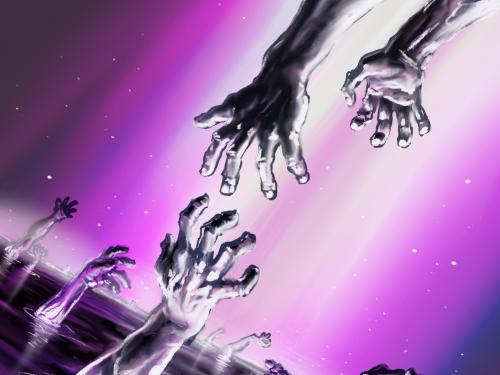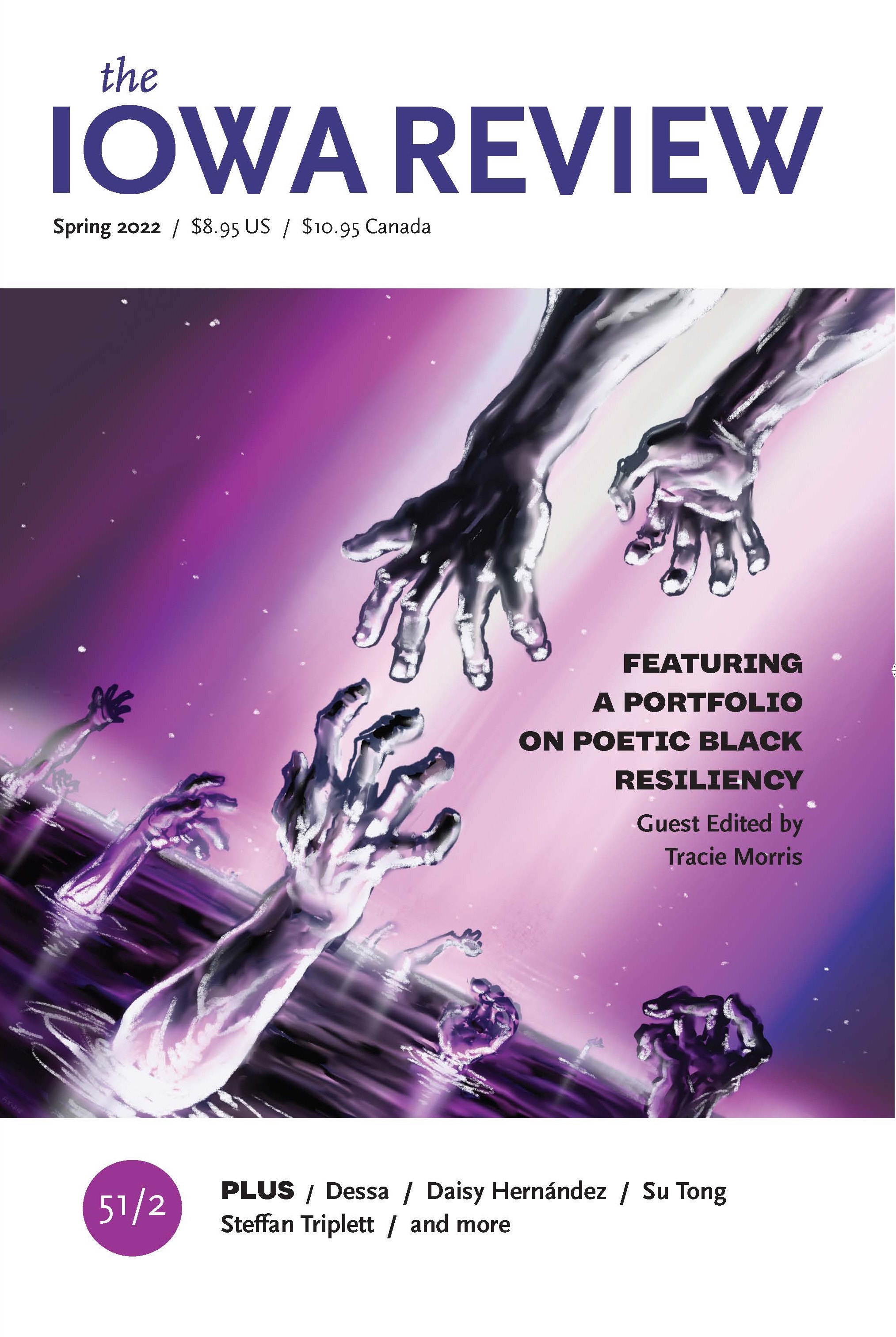
The idea for this project began in the aftermath of the Black Lives Matter protests against brutality in 2020 and the contraction of the in-person public sphere due to the COVID pandemic. Community space, assertion, and dignity have needed to be reframed in light of both of these realities, considering physical safety, public health, community health, and the psychologically jarring aspects of unexpected death. The desire to advocate for vulnerable communities manifests in marches, protests, and legal challenges; it also is demonstrated in aesthetics, including dedicated street signs, murals, and, indeed, all forms of art.
The most recent examinations and affirmations of Black lives are part of a long-standing tradition that asserts Black humanbeingness (the contention of this helped justify our particularly inhumane enslavement), Black worth, and of course Black struggle. However dismaying it may be to return to these seemingly intractable issues, I am also continually humbled and impressed by the indomitability of Black people and support by our allies to “keep on keeping on,” to not give up, to affirm the kind of country and world we want: “Without culture there can be no growth; without exertion, no acquisition; without friction, no polish; without labor, no knowledge; without action, no progress; and without conflict, no victory” (Frederick Douglass).
It has been a great honor to cultivate this conversation for The Iowa Review (and as part of the Iowa writers’ community). I am grateful for the opportunity to provide a bit of perspective for this special section. Why “resiliency” as a theme? First, resiliency goes beyond these repeated moments that speak to Black advocacy for justice and reiterates the continued insistence to continue, first (this has not always been a given, unfortunately). Resiliency also persists in making this world better as we are determined to thrive. This selection of poems goes beyond a buttoned-up stoicism and presents a diversity of emotions and approaches to methods of living, resiliency, and resolve. I have been astounded by the breadth of ideas, breath through the lines, and depth of emotion by the poets kind enough to contribute, some of whom are long overdue for their debut in TIR. The introspection and circumspection in this section spans a range of feelings: from the very personal to the sweepingly political reality of African-American lives over the last four hundred years.
In this particular era of worry, how does Black resiliency matter? What shape does it take? As the pandemic and the question of Black safety (as well as the pushback against raising these questions) continues, the poets on these pages give us a broader sense of what is, of what can be meaningful at this time. Together they present an eclectic community of thoughtful, personal, visceral, and meditative commentaries on pressing issues of the day and eternal questions for individual Black people, Black communities and, by metaphorical extension, the expanse of humankind.
More specifically, however, what forms do Black resilience take? What are default stances regarding resiliency and Black agency, Black power? Well, knowledge is one, awareness of the micro- and macrocosmic circumstances is another. When I solicited poems for this issue, I made some assumptions on resiliency based on my own experience and approaches. This is a generational position based on the first wave of children of activists from the Civil Rights and subsequent Black power eras. What do the kids of those activists/optimists/later hopeful cynics experience as resiliency? For some of us this has been established as a kind of stalwartness that puts forward a brave outward face, but is that presentation the only kind? Is that true resilience? These are questions multiple generations have asked.
The range of this collection presents the bravery of personal and political stories that present resiliency in the context of curiosity. These poems are as interested in the questions as they are in the answers. How is Blackness itself framed and reframed? How is the individual Black person framed by others? How do we frame ourselves? How do we examine the seams in the frame and question what that frame, is in fact, made of?
The poetry and poetics of this issue include visual art, a variation on the concept of imagery in poetry that’s well-established. Tim Fielder’s cover art graces the issue and, to me, is an abstract presentation of poetic image that includes harkening to the space for the breath (as Lynne kindly referred to in her comments about this section). The artwork by Tim, in its multidimensional vibrant hues, also evokes synapses between neurons, an infinite “black poetentiality in space.” One could say this for all of the literal imagery and figurative imagery/imagination throughout the section. These are just a few manifestations of the insistence of breathing, inspiration, existence, despite confrontations about our shared space, our shared air. This selection includes conventional and innovative writing to present an expansive, heterodox approach to style, meaning, and content. I hope these poetic encounters appeal to your curiosity, knowledge, your sense of justice, affirmation, your own resiliency.
